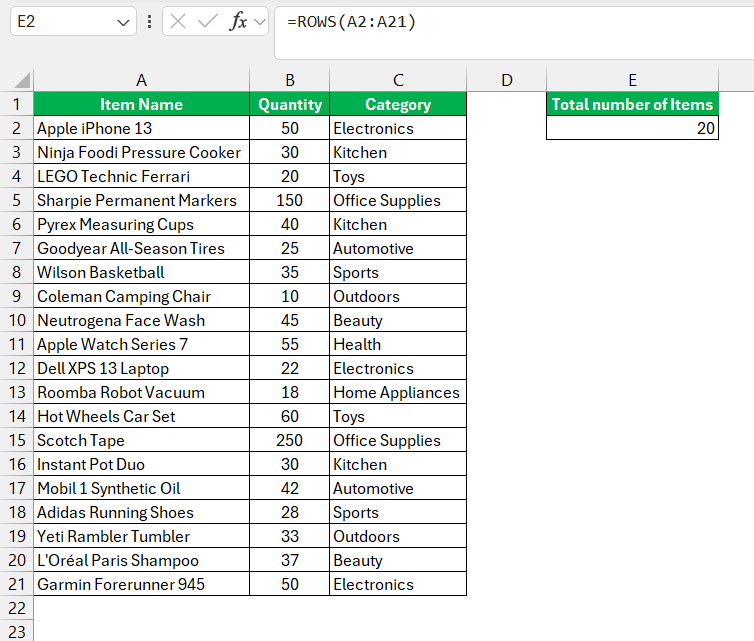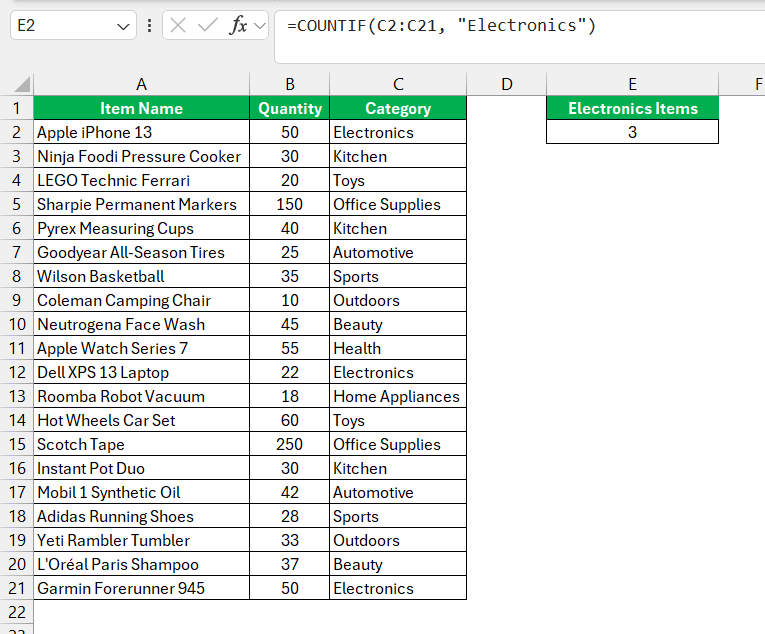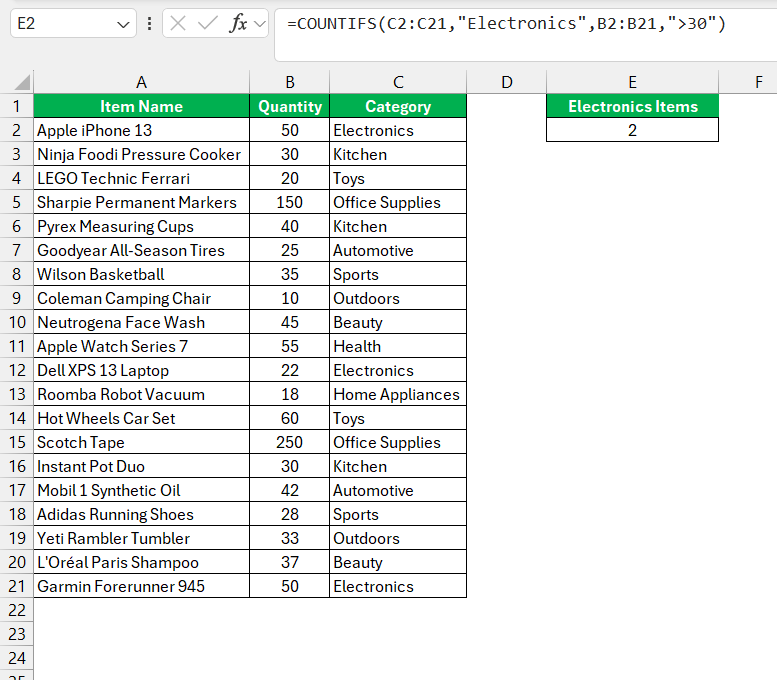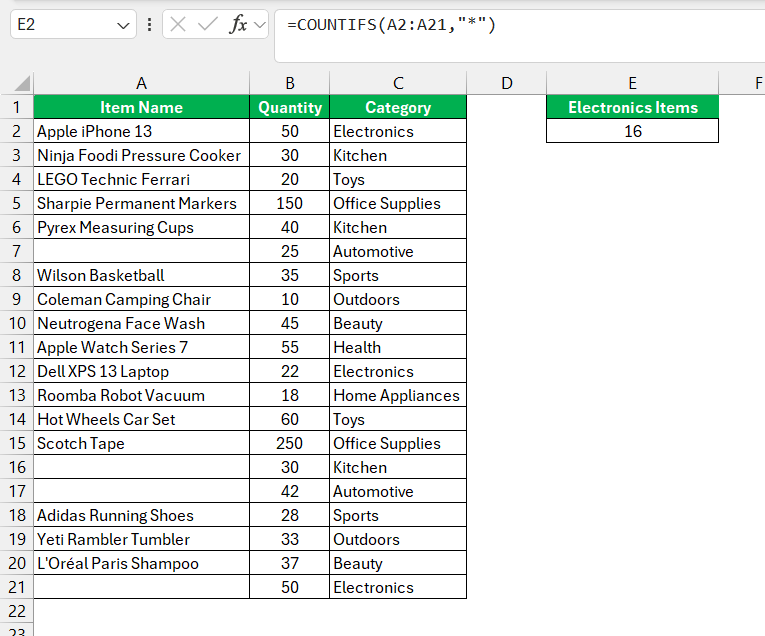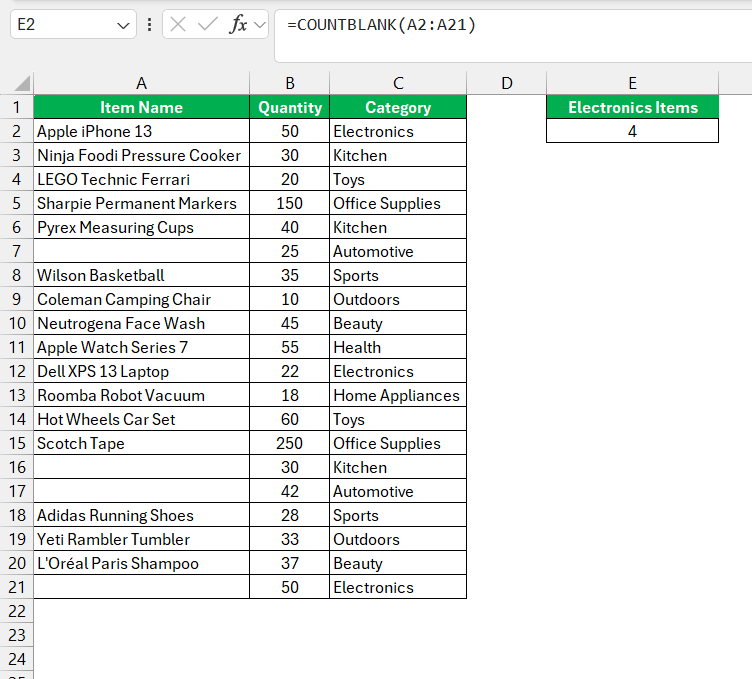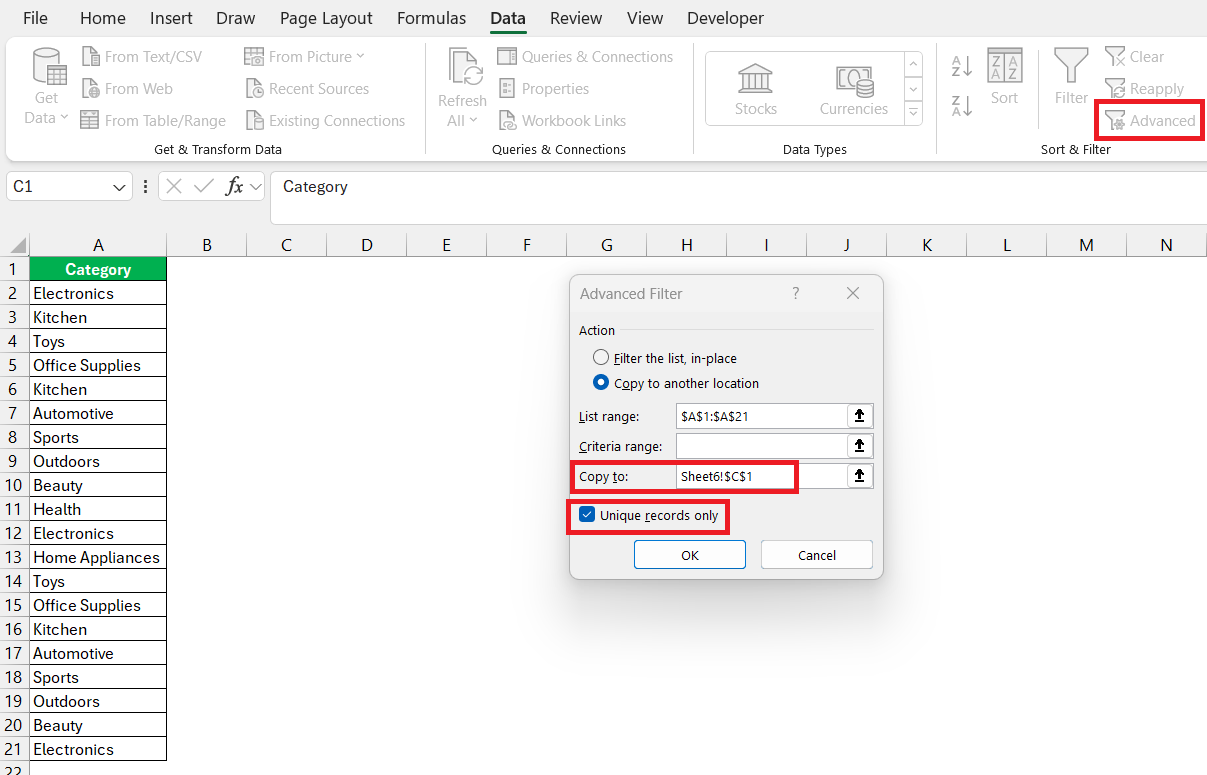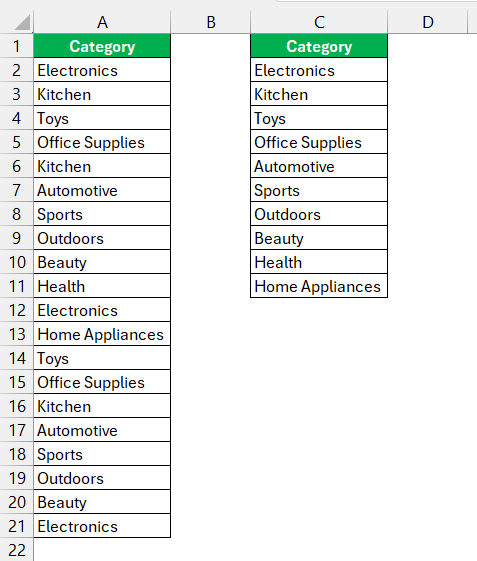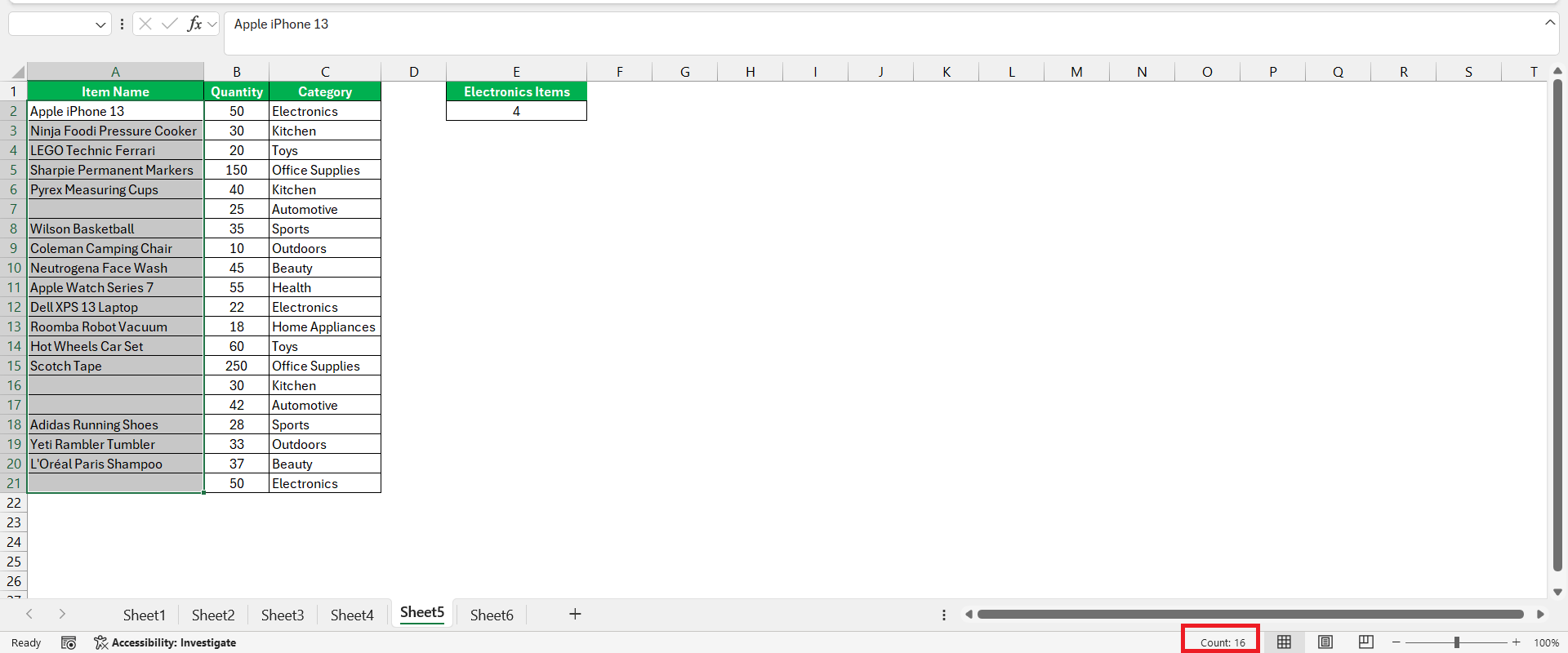Count Excel Row is a fundamental task that can be accomplished using various built-in functions and techniques. Whether you need to count all the rows in a worksheet, rows containing specific data, or rows meeting certain criteria, Excel offers versatile tools like the COUNTA, COUNT, and COUNTIF functions. Understanding how to effectively use these functions can streamline data analysis and improve efficiency in managing large datasets. This introduction will guide you through the basics of counting rows in Excel, highlighting key methods and practical applications.
Key Takeaways:
- Understanding Row Counts is Essential: Mastering row counts in Excel is vital for accurate data analysis and reporting.
- Navigating Excel Tools: Utilize the Home and Formulas tabs, as well as the status bar, for efficient row counting and analysis.
- Simple Row Counting: The ROWS function provides a straightforward way to count rows in a specified range.
- Advanced Row Counting: COUNTIF and COUNTIFS functions allow counting rows based on single or multiple criteria.
- Special Counting Cases: COUNTBLANK helps in identifying empty rows, while the Advanced Filter feature aids in filtering unique values for data cleansing.
Table of Contents
Unlocking the Power of Count Excel Row
Why Mastering Row Counts is Essential for Data Management
Counting rows in Excel is crucial for effective data management. It helps me understand the scale of my dataset, which is vital for creating accurate reports, analyzing trends, or preparing presentations. Inaccurate row counts can lead to flawed insights or missed opportunities, so mastering this skill ensures precision in data-driven decisions.
Navigating Excel’s Interface for Row Analysis
Navigating Excel’s interface may seem challenging initially, but it’s designed to offer powerful data analysis tools. The Home tab provides essential tools for sorting and filtering rows, while the Formulas tab is where I access functions like COUNTIF and COUNTIFS for precise analysis.
I also make use of the status bar at the bottom of the worksheet for quick counts, sums, and averages of selected rows.
Step-by-Step Guide to Quick Row Counts
Using the ROWS Function for Total Row Counts
In Excel, the ROWS function is a straightforward way to count rows in a range. To use it, I select a cell for the result, enter =ROWS(range), and press “Enter.” For example, =ROWS(A2:A21) returns 20, showing there are 20 rows in that range.
This function is simple yet versatile, handling any range regardless of cell content and serving as a foundation for more complex data tasks.
Advanced Counting with COUNTIF and COUNTIFS
For more advanced row counting based on specific criteria, I use the COUNTIF and COUNTIFS functions. COUNTIF helps me count rows that meet a single condition. For instance, =COUNTIF(C2:C21, "Electronics") counts rows with “Electronics” in the range C2 to C21.
When I need to count rows based on multiple conditions, COUNTIFS is my go-to. For example, =COUNTIFS(C2:C21, "Electronics", B2:B21, ">30") counts rows where one column has “Electronics” and another column has values greater than 30.
These functions are essential for analyzing trends, segmenting data, and performing quality checks, enhancing my data analysis efficiency.
Making the Most of Count Functions in Real Scenarios
Tally Your Text: Counting Rows with Text Values Only
To tally rows with text values only in Excel, I utilize the COUNTIF function with the asterisk wildcard character, which is adept at identifying any sequence of characters. This technique is invaluable when I need to differentiate text entries from numbers or blanks within a dataset.
I begin by selecting the data range – let’s say A2:A21. Then, I place my COUNTIF formula, for example, in cell E2. The proper formulation is =COUNTIF(A2:A21,"*"), which instructs Excel to count only the cells in the range A2:A21 that contain text strings. When I press Enter, the function returns the number of cells that meet my criterion.
In practical terms, this ability to count text rows is a powerful tool for tasks like summarizing feedback from surveys, categorizing inventory items, or any scenario where textual data dominates. By focusing on text-only rows, I ensure that my analysis correctly interprets the categorical data, which could have significant implications for conclusions and decisions.
Special Counting Cases Deconstructed
Blank Slate Strategies: Counting Empty Rows with COUNTBLANK
In scenarios where I need to assess the completeness of my dataset, COUNTBLANK is an indispensable strategy for counting empty rows in Excel. It provides a simple yet effective method to quantify blanks within a range, offering insights into data quality or integrity.
To count empty rows, all I have to do is specify the range in question. For example, inputting =COUNTBLANK(B2:B21) into a cell returns the count of all blank cells in the selected range, from B2 through B21. It’s an instant audit that reveals the empty spots, showing me where data might be missing or inputs are required.
Employing COUNTBLANK also aids in preparing my data for advanced analyses as it can flush out any incomplete records that could distort results. Whether I’m cleaning up a freshly imported dataset or verifying that all entries have been made post-data collection, COUNTBLANK ensures that I’m not overlooking the voids hidden among the values.
Unveiling Unique Values: Employing Advanced Filter
When unveiling unique values in a dataset—an essential process in data cleansing and analysis—I frequently rely on Excel’s Advanced Filter feature. This powerful tool can either filter unique values in place or extract them to a new location, serving as a dual-purpose instrument for my data management tasks.
To employ the Advanced Filter for extracting unique values, I select the range containing duplicates, navigate to the Data tab, and click ‘Advanced’ in the Sort & Filter group. Then, I opt to copy the unique records to a new location and specify my destination range.
By executing these steps, only the unique entries from my selected range populate my desired location. It’s an incredibly effective way to distill a dataset to its essence.’
Best Practices and Tips for Accurate Row Counts
Avoiding Common Pitfalls in Row Counting
In my experience, avoiding common pitfalls in row counting comes down to vigilance and an understanding of Excel’s intricacies. One classic mistake is overlooking the difference between the COUNT and COUNTA functions, which could lead to inaccurate counts if cells contain data types not accounted for by the chosen function.
Another pitfall is not accounting for hidden rows when row counts are used in conjunction with filters or other data manipulation tools. It is critical to remember that functions like COUNT or COUNTIF do not distinguish between visible and hidden cells; hence, they may return larger counts than expected in filtered datasets.
Merged cells can also pose a significant challenge when counting rows. Although visually appealing, they disrupt the continuity of a range and can lead to erroneous results, especially with functions designed to count based on cell ranges. My advice: use merging sparingly, and be cautious when applying functions to ranges with merged cells.
Additionally, failing to recognize the header rows in a dataset and including them in the row count is another common oversight. It’s a simple mistake but one that can impact the final tallies; An easy fix is to adjust the range to exclude the header row or utilize structural references in tables to automatically omit it from calculations.
By staying alert to these common stumbling blocks and applying a touch of due diligence, I ensure that my row counts reflect the actuality of my data, which is the bedrock of trustworthy analysis.
Maximizing Efficiency with Shortcut Methods and Status Bar
Maximizing efficiency in Excel is pivotal, and I actively use shortcut methods and status bar insights to streamline my row counting workflow. The status bar, in particular, is a feature that offers real-time statistical information about selected ranges with minimal effort on my part. By simply highlighting the desired cells, it instantly displays count details pertinent to the selection, including numerical count, average, sum, min, and max values.
To tailor which statistics appear, I right-click on the status bar to customize my view. This level of immediate access to cell count information is a significant time-saver, especially when I’m deep in data analysis and need quick answers without the distraction of typing formulas.
As for shortcut methods, keyboard shortcuts are a true boon for productivity. For example, swiftly selecting an entire row with “Shift + Space” or a column with “Ctrl + Space” and then glancing at the status bar for the count allows me to verify quantities without ever touching the mouse.
Furthermore, using “Ctrl + Shift + Down Arrow” or “Ctrl + Shift + Right Arrow” to highlight to the end of my data before counting, makes for an incredibly efficient way to process large datasets. These techniques, combined with status bar insights, give me a competitive edge, enabling swift and strategic data analysis that I can trust.
FAQs: A Compass for Your Excel Row Count Queries
How do I automatically count rows in Excel?
To automatically count rows in Excel, use the COUNT function. Select a cell for the result, type =COUNT( followed by your range, close parentheses, and press Enter. This counts numerical values in the range. For total rows, select the range and check the count on the status bar.
Is there an Excel formula to count rows?
Yes, Excel provides the ROWS function to count rows. Enter =ROWS(range) in a cell, replacing ‘range’ with your desired cell range, and it will return the number of rows included. For example, =ROWS(A1:A10) counts rows from A1 to A10.
How Do I Quickly Count All Non-Blank Rows in a Given Range?
To quickly count all non-blank rows in a range, use the COUNTA function. Enter =COUNTA(range) into a cell and replace ‘range’ with your target cell range. It will return the count of non-empty cells. For example, =COUNTA(A1:A10) counts non-blank cells from A1 to A10.
Can I Count Rows Based on Multiple Criteria at Once?
Yes, to count rows based on multiple criteria, use the COUNTIFS function. Enter =COUNTIFS(range1, criteria1, range2, criteria2,...) where each ‘range’ is a set of cells to check, and each ‘criteria’ is the condition for those cells. It counts rows meeting all criteria.
What is the rows function?
The ROWS function in Excel returns the number of rows in a specified range. You input =ROWS(array) where ‘array’ is the cell range, and it delivers a numerical value reflecting the count of rows within that range, regardless of the data they contain.
John Michaloudis is a former accountant and finance analyst at General Electric, a Microsoft MVP since 2020, an Amazon #1 bestselling author of 4 Microsoft Excel books and teacher of Microsoft Excel & Office over at his flagship MyExcelOnline Academy Online Course.

